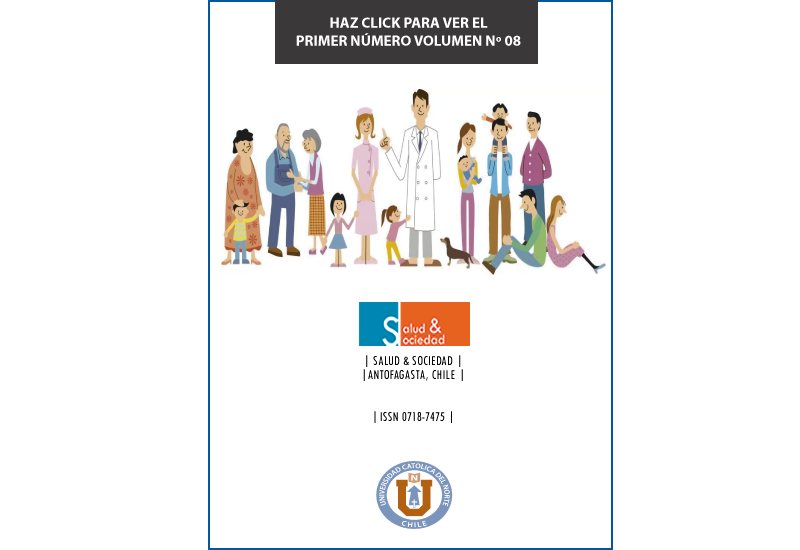Cognitive diagnosis models (CDMS):
theory, didactics and application in behavioral sciences
DOI:
https://doi.org/10.22199/S07187475.2017.0001.00005Keywords:
CDMs, Psychometrics, Latent variablesAbstract
CDMs represent a multidimensional choice in psychometrics when observable and latent variables are believed to be categorical.The study presents a thorough revision of the literature about original models, as well as its applications and current developments in psychometric research. Additionally, a revision of statistical software to estimate models and examples of applications in behavioral sciences and health care is also presented. Didactic examples based on simulated data show the capability of models to classify people according to their latent attributes.
References
Chiu, C. Y., & Douglas, J. (2013). A nonparametric approach to cognitive diagnosis by proximity to ideal response patterns. Journal of Classification, 30(2), 225-250.
Chiu, C., Douglas J., & Li, X. (2009). Cluster analysis for cognitive diagnosis: Theory and applications. Psychometrika, 74(4), 633-665.
Chiu, C.-Y., Köhn, H.-F., & Wu, H.-M. (en prensa). Fitting the Reduced RUM with Mplus: A Tutorial. International Journal of Testing.
Culpepper, S. A. (2015). Bayesian Estimation of the DINA Model with Gibbs Sampling. Journal of Educational and Behavioral Statistics, 40(5), 454-476.
de La Torre, J. (2008). An Empirically Based Method of Q-Matrix Validation for the DINA Model: Development and Applications. Journal of Educational Measurement, 45(4), 343-362.
de la Torre, J. (2009). DINA model and parameter estimation: A didactic. Journal of Educational and Behavioral Statistics, 34(1), 115-130.
de la Torre, J. (2011). The generalized DINA model framework. Psychometrika, 76(2), 179-199.
de la Torre, J., & Chiu, C.Y. (2015). A General Method of Empirical Q-Matrix Validation. Psychometrika, 81(2), 253-273.
de la Torre, J., & Douglas, J. A. (2004). Higher-order latent trait models for cognitive diagnosis. Psychometrika, 69(3), 333-353.
de la Torre, J., & Lee, Y. S. (2013). Evaluating the Wald Test for Item-Level Comparison of Saturated and Reduced Models in Cognitive Diagnosis. Journal of Educational Measurement, 50(4), 355-373.
de la Torre, J., van der Ark, L. A., & Rossi, G. (2015). Analysis of clinical data from cognitive diagnosis modeling framework. Measurement and Evaluation in Counseling and Development. Publicación en línea. DOI:10.1177/0748175615569110
DeCarlo, L. T. (2011). On the analysis of fraction subtraction data: The DINA model, classification, latent class sizes, and the Q-matrix. Applied Psychological Measurement, 35(1), 8-26.
DeCarlo, L. T. (2012). Recognizing Uncertainty in the Q-Matrix via a Bayesian Extension of the DINA Model. Applied Psychological Measurement, 36(6), 447-468.
Dempster, A.P., Laird, N.M., & Rubin, D.B. (1977). Maximum Likelihood from Incomplete Data via the EM Algorithm. Journal of the Royal Statistical Society, 39(1), 1–38.
Gelman, A., Carlin, J. B., Stern, H. S., Dunson, D. B., Vehtari, A., & Rubin, D. B. (2013). Bayesian data analysis. Boca Raton, FL: CRC press.
Geman, S., & Geman, D. (1984). Stochastic relaxation, Gibbs distributions, and the Bayesian restoration of images. IEEE Transactions on Pattern Analysis and Machine Intelligence, 6, 721-741.
Gill, J. (2007). Bayesian methods: A social and behavioral sciences approach. Boca Raton, FL: CRC press.
Junker, B. W., & Sijtsma, K. (2001). Cognitive assessment models with few assumptions, and connections with nonparametric item response theory. Applied Psychological Measurement, 25(3), 258–272.
Köhn, H.-F., & Chiu, C.-Y. (2016). A proof of the duality of the DINA model and the DINO model. Journal of Classification, 33, 171-184.
Kuo, B. C., Pai, H. S., & de la Torre, J. (2016). Modified Cognitive Diagnostic Index and Modified Attribute-Level Discrimination Index for Test Construction. Applied Psychological Measurement, 40(5), 315-330.
Hartz, S. M. (2002). A Bayesian framework for the unified model for assessing cognitive abilities: Blending theory with practicality. Unpublished doctoral dissertation, University of Illinois at Urbana-Champaign, UrbanaChampaign, IL.
Henson, R. A., Templin, J. L., & Willse, J. T. (2009). Defining a family of cognitive diagnosis models using log-linear models with latent variables. Psychometrika, 74(2), 191-210.
Henson, R., Roussos, L., Douglas, J., & He, X. (2008). Cognitive diagnostic attribute-level discrimination indices. Applied Psychological Measurement, 32(4), 275-288.
Huang, H.Y. & Wang, W.C. (2014). The Random-Effect DINA Model. Journal of Educational Measurement, 51(1), 75–97.
Huo, Y., & de la Torre, J. (2014). Estimating a Cognitive Diagnostic Model for Multiple Strategies via the EM Algorithm. Applied Psychological Measurement, 38(6), 464-485.
Lee, Y. S., de la Torre, J., & Park, Y. S. (2012). Relationships between cognitive diagnosis, CTT, and IRT indices: an empirical investigation. Asia Pacific Education Review, 13(2), 333-345.
Lee, Y.-S., Park, Y. S., & Taylan, D. (2011). A cognitive diagnostic modeling of attribute mastery in Massachusetts, Minnesota, and the U.S. national sample using the TIMSS 2007. International Journal of Testing, 11, 144-177.
Leighton, J. P., Gierl, M. J., & Hunka, S. M. (2004). The attribute hierarchy method for cognitive assessment: A variation on Tatsuoka’s rule-space approach. Journal of Educational Measurement, 41(3), 205-237.
Liu, J., Xu, G., & Ying, Z. (2012). Datadriven learning of Q-matrix. Applied Psychological Measurement, 36, 548–564.
Maris, E. (1999). Estimating multiple classification latent class models. Psychometrika, 64(2), 187–212.
McLachlan, G. J., & Krishnan, T. (1996). The EM algorithm and extensions. New York, NY: Wiley.
Messick, S. (1989). Validity. In R. L. Linn (Ed.), Educational measurement (pp.13-103). Old Tappan, NJ: Macmillan.
Muthén, L. K., & Muthén, B. O. (2012). Mplus statistical modeling software: Release 7.0. Los Angeles, CA: Muthén & Muthén.
Park, Y. S., & Lee, Y.-S. (2014). An Extension of the DINA model using covariates: Examining factors affecting response probability and latent classification. Applied Psychological Measurement, 38(5), 376-390.
R Core Team (2012). R: A language and environment for statistical computing. R Foundation for Statistical Computing, Vienna, Austria. URL http://www.Rproject.org
Rizzo, M. L. (2008). Statistical Computing with R. Boca Raton, FL: Chapman & Hall/CRC.
Robitzsch, A., Kiefer, T., George, A.C., & Ünlü, A. (2014). CDM: Cognitive Diagnosis Modeling. R package version 2.7-7. http://CRAN.Rproject.org/package=CDM
Rupp, A. A. (2007). The answer is in the question: A guide for describing and investigating the conceptual foundations and statistical properties of cognitive psychometric models. International Journal of Testing, 7, 95–125.
Rupp, A. A., & Templin, J. L. (2008). Unique characteristics of diagnostic classification models: A comprehensive review of the current state-of-the-art. Measurement, 6(4), 219-262.
Rupp, A. A., Templin, J., & Henson, R. A. (2010). Diagnostic assessment: Theory, methods, and applications. New York, NY: Guilford.
Tatsuoka, K. K. (1990). Toward an integration of item-response theory and cognitive error diagnosis. In N. Frederiksen, R. Glaser, A. Lesgold, & M. Shafto (Eds.), Diagnostic monitoring of skill and knowledge acquisition (pp. 453-488). Hillsdale, NJ: Erlbaum.
Templin, J. L., & Henson, R. A. (2006). Measurement of psychological disorders using cognitive diagnosis models. Psychological methods, 11(3), 287-305.
Templin, J., & Hoffman, L. (2013). Obtaining diagnostic classification model estimates using Mplus. Educational Measurement: Issues and Practice, 32(2), 37-50.
Thomas, A., O’Hara, B., Ligges, U., & Sturtz, S. (2006). Making BUGS open. R news, 6(1), 12-17.
van der Linden, W.J., & Glas, C.A.W. (2000). Computerized adaptive testing: theory and practice. Dordrecht: Kluwer Academic Publishers.
Vermunt, J. K., & Magidson, J. (2005). Technical guide for Latent Gold 4.0: Basic and advanced. Belmont, MA: Statistical Innovations Inc.
von Davier, M. (2005). A general diagnostic model applied to language testing data (ETS Research Report RR-05- 16). Princeton, NJ: Educational Testing Service.
von Davier, M. (2008). The mixture general diagnostic model. In. G. R. Hancock & K. M. Samuelsen (Eds.), Advances in latent variable mixture models (pp. 255-274). Charlotte, NC: Information Age Publishing.
von Davier, M. (2009). Some notes on the reinvention of latent structure models as diagnostic classification models. Measurement, 7(1), 67-74.
von Davier, M. (2010). Hierarchical mixtures of diagnostic models. Psychological Test and Assessment Modeling, 52(1), 8-28.
von Davier, M. (2014). The DINA model as a constrained general diagnostic model: Two variants of a model equivalency. British Journal of Mathematical and Statistical Psychology, 67(1), 49-71.
Xin, T., & Zhang, J. (2015). Local Equating of Cognitively Diagnostic Modeled Observed Scores. Applied Psychological Measurement, 39(1), 44-61.
Xu, X., & Davier, M. (2008). Fitting the structured general diagnostic model to NAEP data. (ETS Research Rep. No. RR-08-27). Princeton, NJ: ETS.
Xu, G., & Zhang, S. (2016). Identifiability of Diagnostic Classification Models. Psychometrika, 81(3), 625–649.
Published
How to Cite
Issue
Section
Los autores continúan como propietarios de sus trabajos, y pueden volver a publicar sus artículos en otro medio sin tener que solicitar autorización, siempre y cuando indiquen que el trabajo fue publicado originariamente en Revista Salud & Sociedad (ISSNe:0718-7475).



_(1).png)





